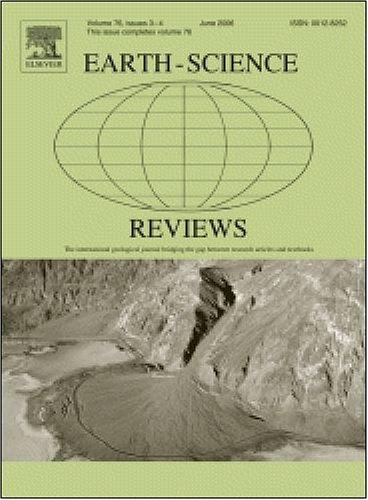The Paleoproterozoic (c. 2.3 Ga) Gowganda Formation: Deep water, glacially-influenced debrites and related mass flow along a passive margin
IF 10.8
1区 地球科学
Q1 GEOSCIENCES, MULTIDISCIPLINARY
引用次数: 0
Abstract
The Gowganda Formation (ca. 2.3 Ga) of the Huronian Supergroup in Northern Ontario, Canada is the best-preserved stratigraphic record of a Paleoproterozoic glaciogenic environment in the world. The Lower Gowganda has been ascribed to a putative panglacial ‘Snowball Earth’ event despite little agreement as to its origins, paleotectonic and paleogeographic setting, and paleolatitude. The present study leverages a large database of previous field investigations with new sedimentological, structural and basin analysis data that shows that Gowganda facies record glacially-influenced, subaqueous, gravity-driven mass flow processes in deep water. The Lower Gowganda Formation is dominated by hundred-meter thick amalgamated units of thickly-bedded to massive, chaotically-bedded and graded diamictites. It also contains thick (>50 m) regionally extensive laminated mudstone units (‘laminites’) with a small number of mostly pebble-grade lonestones, and interbedded graded sandstone and conglomerates. We interpret diamictite facies as debrites formed by downslope subaqueous mixing of large volumes of unstable glacially-derived gravel, sand, and mud. Laminites are distal turbidites with sparse ice-rafted drop stones and outrunner clasts from adjacent debris flows. Interbedded massive and graded conglomerates and sandstones are identified as turbiditic deposits resulting from slumping and resedimentation of basin margin glaciofluvial or nearshore deposits; clast shapes and lithologies are the same as those in diamictites which is key evidence for remixing with mud during mass flow to generate thick regionally-extensive diamictites in a deep water base-of-slope setting. Ice contact, basin margin sediments were not preserved. There are clear sedimentological and paleotectonic parallels between the Gowganda Formation and glacially-influenced successions of younger Neopreoterozoic age indicating a commonality of depositional environments where glaciogenic sediment was recycled and focussed into evolving rifts during continental breakup and along succeeding passive margins. We emphasize the ongoing role of both basement faulting and glacial erosion in creating significant and evolving paleo-topographic relief, giving rise to marked variations in stratal thickness. We conclude that glaciogenic sediments were reworked by gravity and preserved along the tectonically-active passive margin of a recently-rifted Superior Craton during the breakup of Kenorland. Pleistocene glaciogenic sedimentation adjacent to modern uplifted passive basement margins, such as the coast of Norway, is an appropriate tectono-sedimentary analog.
求助全文
约1分钟内获得全文
求助全文
来源期刊

Earth-Science Reviews
地学-地球科学综合
CiteScore
21.70
自引率
5.80%
发文量
294
审稿时长
15.1 weeks
期刊介绍:
Covering a much wider field than the usual specialist journals, Earth Science Reviews publishes review articles dealing with all aspects of Earth Sciences, and is an important vehicle for allowing readers to see their particular interest related to the Earth Sciences as a whole.
 求助内容:
求助内容: 应助结果提醒方式:
应助结果提醒方式:


